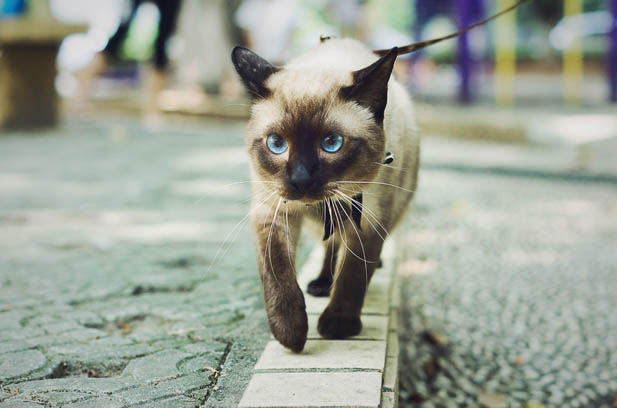As a seasoned cat owner preparing to open a cattery, I’ve witnessed firsthand the diversity of feline personalities and the misconceptions that surround popular breeds like Siamese and Ragdolls. Contrary to common stereotypes, every cat is an individual, and breed labels often fail to capture the complexity of their characters. Let’s dive into the realities of these breeds, debunk myths, and explore what makes each feline unique.
The Fallacy of “Breed Personalities”
The claim that “Siamese are hyperactive” or “Ragdolls are always docile” is an oversimplification. I’ve seen traditional Siamese cats that prefer napping by the fire and modern Ragdolls that zoom around like kittens well into adulthood. Genetics may influence tendencies—Siamese often have high energy, Ragdolls may seek human contact—but environment, socialization, and individual spirit play a larger role. A rescue Siamese once stayed hidden for weeks, only to transform into a lap cat after gaining trust, while a Ragdoll I fostered avoided cuddles but loved climbing curtains.

The term “cat-dog” to describe Siamese is misleading. While some may fetch toys or follow their owners, this isn’t universal. My own traditional Siamese, Mila, is as independent as any cat, only seeking attention on her terms. Breed stereotypes, like comparing modern Siamese to Zhang Liang, the model and traditional ones to Tian Liang, the athlete, are playful but highlight how appearance varies widely within a breed, let alone personality.
Grooming Realities: It’s Not Just About Hair Length
The debate over “long hair vs. short hair” shedding is overstated. All cats shed, and regular brushing is essential for health, regardless of breed. My short-haired Siamese, Koji, leaves just as much fur on my black couch as my Ragdoll mix, Luna. The difference? Luna’s fur forms mats if neglected, while Koji’s requires less maintenance but still needs weekly combing to prevent hairballs.
For those wary of grooming, a hairless cat like the elf ear Sphynx might seem ideal, but they demand even more care—regular baths to remove skin oils, sunscreen for outdoor time, and extra warmth in cold weather. No cat is truly “low-maintenance”; it’s about choosing challenges that align with your lifestyle.
Siamese Cats: Beyond the “Point” of No Return
Siamese cats are often defined by their “pointed” coat—darker fur on the face, ears, paws, and tail—but their diversity is staggering:
Modern vs. Traditional:
Modern Siamese have sleek, angular faces and athletic builds, resembling the elegance of a model.
Traditional Siamese (often called “applehead”) have rounder faces and a more robust frame, evoking the approachability of an athlete.
Coat Colors:
Common: Seal point (dark brown), blue point (grey), tabby point (striped).
Rare: Chocolate point, tortoiseshell, or cream point. These “rare colors” are not “genetic flaws” but simply less common, often commanding higher prices due to demand.
Contrary to claims, adult Siamese and Ragdolls aren’t vastly different in size. Most Siamese weigh 3-6 kg, while Ragdolls average 4-8 kg— a difference of a few centimeters and kilograms, not a “giant vs. small” divide.
Ragdolls: More Than Just a Pretty Face
Ragdolls are celebrated for their striking looks and “floppy” demeanor, but there’s more to them than meets the eye:
Patterns:
Pointed Ragdolls resemble long-haired Siamese, with dark points and no white markings.
Bicolor Ragdolls have white faces and paws, often called “masked” or “mittened.” A well-defined “face mask” and symmetrical markings can make them cost five figures (¥10,000+), reflecting the breeder’s skill in pairing genetics.
Temperament:
While many are gentle, some Ragdolls are surprisingly active. I’ve seen a bicolor Ragdoll that adores leash walks and another that hides from strangers—proof that breed is a starting point, not a rule.
Pricing Transparency: What You’re Really Paying For
The “¥5,000 Siamese” comment highlights a common confusion about breed pricing:
Siamese Costs:
Traditional Siamese: ¥3,000-5,000 from reputable breeders (including health checks and vaccinations).
Modern Siamese or rare colors: ¥5,000-10,000+ due to breeding standards.
Ragdoll Costs:
Pointed Ragdolls: ¥8,000-15,000.
Show-quality bicolor Ragdolls: ¥15,000-30,000+.
Price reflects lineage, health screenings, and breeder ethics. A ¥3,000 traditional Siamese from a responsible cattery is vastly different from a ¥500 “backyard” kitten, which may hide genetic issues.
The Bottom Line: Choose the Cat, Not the Label
Whether you’re drawn to a Siamese’s elegance or a Ragdoll’s fluff, remember:
Visit Cats in Person: Spend time with them. Does the Siamese tolerate handling, or does the Ragdoll shy away?
Ask About Health History: Reputable breeders will share genetic testing results and vaccination records.
Embrace the Unexpected: My upcoming cattery will offer traditional Siamese at ¥3,000 not because they’re “less valuable,” but because I believe in making responsible breeding accessible. And yes, I’ll also have hairless Sphynxes for those brave enough to embrace their unique charm.
Conclusion: Celebrating Feline Individuality
In the end, the magic of cats lies in their unpredictability. A Siamese might surprise you with calmness, a Ragdoll with spunk, and a hairless cat with warmth (literally, as they’re often described as “purring hot water bottles”). So forget the stereotypes, visit a cattery, and let the cat choose you. After all, the best companions aren’t those who fit a mold—they’re the ones who steal your heart, one purr at a time.
Leave a Reply